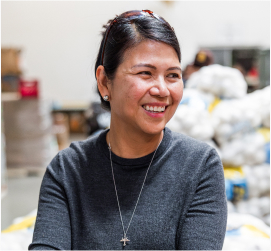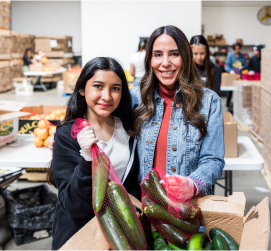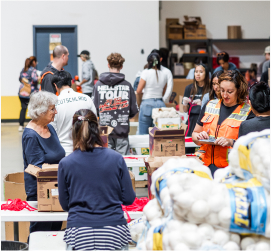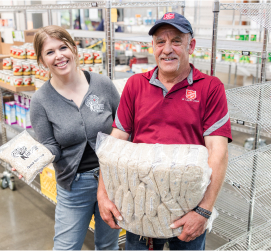
Hunger Facts & Research
Nutrition Insecurity in San Diego County
Of San Diego County’s 3.2 million residents,* 848,000 are estimated to be nutrition insecure.** That’s 1 in 4 (26%) San Diegans. Of this number, 218,000 are children, 182,000 are older adults (age 60+), and 137,000 of those facing nutrition insecurity are living with disabilities.** San Diegans experiencing nutrition insecurity are unable to consistently provide three nutritious meals a day for themselves or their families. (*U.S. Census Bureau. 2024. **San Diego Hunger Coalition. March 2025.)
45 Million Pounds of Food in a Fiscal Year
More than 16 Million Pounds of Fresh Produce
For Every $1 Donated We Distribute 2 Meals
Serving San Diego County
The Jacobs & Cushman San Diego Food Bank feeds approximately 400,000 people every month in partnership with 450 nonprofit community partners that operate feeding programs. Our nonprofit partners include food pantries, soup kitchens, shelters, low-income day care centers, senior centers, faith-based organizations, schools and day centers for the elderly and disabled.
The Food Bank’s nonprofit partners collect food from our 90,000-square-foot warehouse in Miramar and our North County Food Bank warehouse in Vista. They then distribute the food directly to people in need in their local communities. By acting as a central distribution point, and through our own direct distributions, the Food Bank and our nonprofit partners provide food to communities throughout the county’s 4,300-square-mile radius. In the fiscal year 2024-2025, the Food Bank distributed 52 million pounds of food and supplies. Of that number, more than 23 million pounds was fresh produce.
Economic Impact and Recipient Data Report 2023:
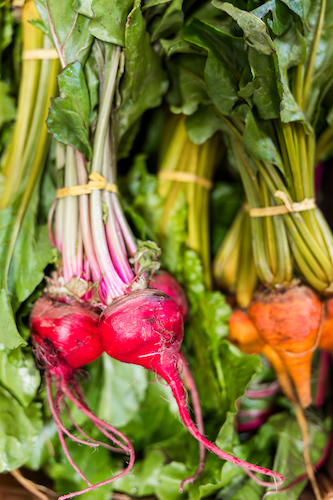
To accomplish both research goals, a comprehensive survey was created, tested, and deployed as part of this study. San Diego State University’s L. Robert Payne School of Hospitality & Tourism Management and SDFB staff created a list of questions together and tested them at two food distribution sites in Northern San Diego before deploying the survey to additional food distribution sites.
Some 1,018 surveys were completed in the current study. A stratified random sample was implemented across four regions of San Diego County: including Northern San Diego, Central San Diego, South Bay and East County. The goal was to ensure that the completed surveys reflected an equitable representation of food distributions throughout the county. In addition, the stratification ensured that an accurate picture of recipients was captured rather than focusing in just one or two areas.
While the study was conducted in close proximity to the COVID-19 pandemic, the data illustrates the current reality of SDFB recipients and the tremendous value SDFB provides to San Diego County.
The SDFB economic impact on San Diego County was calculated at up to $134.5 million depending on how much of the offset food money or “pass-through” recipients used in the economy. Some $83 million represents direct food value provided to SDFB recipients. The primary need for SDFB services is caused by rising costs (76%) with some 45% adding that they do not receive enough income. Another 25% responded that the need for food assistance arose because they were seniors on a fixed income. Other reasons for needing the services include unemployment by the primary breadwinner (13%), a disability (8%) and an inability to qualify for other assistance (7%).
Other key findings from the report include:
- Respondents reported that the resources from the San Diego Food Bank make up an average of 42% of their household food supply.
- Over half (53%) of residents in North County household food is made up by the Food Bank, which is larger than the overall average of 42%.
- North County respondents have an average income of $16,336, which is approximately $8,000 less than the average income of $24,433 and a median income of $7,000 less than the overall median of $21,000. South Bay incomes are almost $3,000 more than the average income and a median income of $2,000 more than the overall median.
- The median household income of families receiving food assistance from the San Diego Food Bank is $21,000 and the average household income is $24,433.
- Most respondents (57%) have been using the Food Bank for less than one year.
- Almost three quarters (72%) of respondents attend food distribution from the SDFB monthly.
Thank you to the L. Robert Payne School of Hospitality & Tourism Management at San Diego State University for conducting this study.
How You Can Help
There are many ways you can help.
